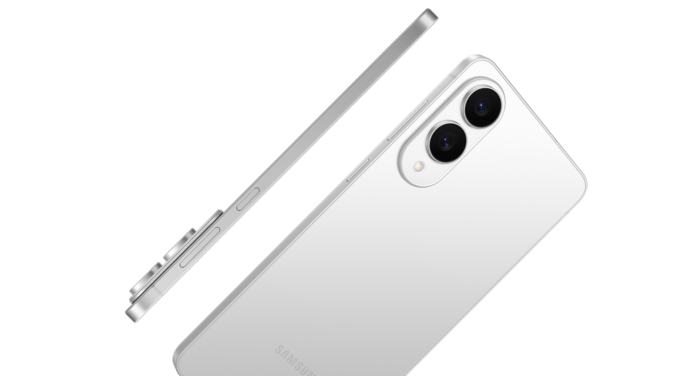This year, Samsung has expanded its product line by adding a new intermediate model to the Galaxy S25 series: the Galaxy S25 Edge . At first glance, this phone could be interpreted as Samsung’s attempt to revive its “thin yet powerful” philosophy.
At just 5.8 mm thick and weighing 163 grams, the Galaxy S25 Edge cuts a profile that breaks free from the bulkiness of the flagships we’ve become accustomed to in recent years. However, some technical sacrifices made for this thinness and lightness won’t go unnoticed, especially by experienced users. While the Galaxy S25 Edge offers an impressive form factor, its hardware choices and battery capacity seem to appeal to a different user base.
It’s safe to say that this new design-focused model sits between the Galaxy S25 Ultra and the Galaxy S25+. While the Galaxy S25 Edge approaches the Ultra model in some features like camera hardware and screen resolution, its overall design more closely resembles the Plus model. However, the device’s thinness provides a noticeable ergonomic advantage in everyday use.
Not only does it fit easily in a pants pocket, it’s so light you might even forget it’s there. But despite all these positive aspects, the Galaxy S25 Edge’s performance in certain basic aspects, like battery life, deserves detailed attention. In the Galaxy S25 Edge review and video, you’ll find our impressions and comments after 10 days with this slim phone.
- Design
- Screen and Sound
- Performance and Battery
- Software and Security
- Camera
- Conclusion

Samsung Galaxy S25 Edge
- 5.8 mm.
- 163 grams.
- 6.7-inch screen
- 200MP main camera
- Snapdragon 8 Elite for Galaxy processor
The Samsung Galaxy S25 Edge’s most distinctive feature is immediately apparent right out of the box: its extreme thinness and lightness. With this model, Samsung aimed to create a device so light it’s easy to grip, and that it feels effortless in your pocket. At 5.8mm thick and 163g, it’s not uncommon in today’s high-end phones. Compared to the Galaxy S25 Ultra, it feels almost featherweight; compared to the S25+, it’s significantly thinner. This thinness is a significant advantage, especially for those who prefer to carry their phones in tight pockets. The fact that the device doesn’t create an uncomfortable bulge when placed in a pants pocket greatly enhances its practicality in everyday use.
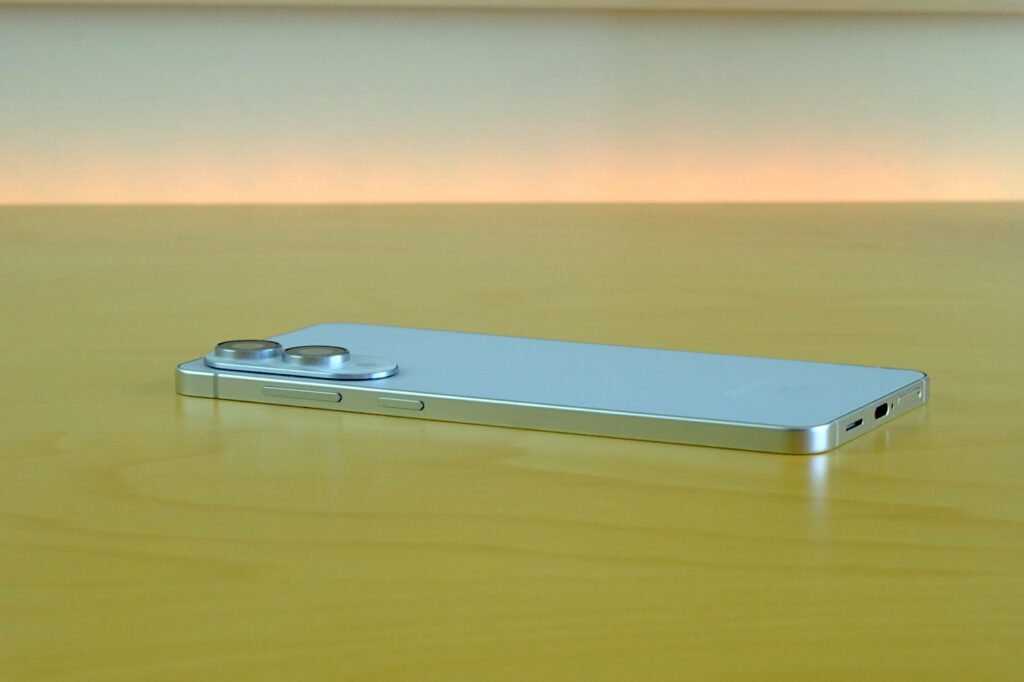
The titanium material used in the phone’s frame both provides a sense of durability and helps reduce the device’s overall weight. This titanium frame, also featured on the Galaxy S25 Ultra, is presented with simpler, sharper lines on the Edge model. Additionally, Gorilla Glass Victus 2 is used on the back and Gorilla Glass Ceramic 2 on the front.
While this combination of materials provides good protection against scratches and impacts, its durability falls slightly short of the Gorilla Armor 2 on the Galaxy S25 Ultra. Ceramic 2 is marketed as resistant to drops from two meters, while Armor 2 guarantees durability up to 2.2 meters. However, this difference isn’t noticeable in daily use.
The Galaxy S25 Edge’s overall design continues the simple, minimal style Samsung has established in recent years. It features straight edges, a thin bezel, and a nearly flat body except for the rear camera island. However, the rear camera module protrudes significantly, creating a significant imbalance when placed on a table.
If you use the phone while it’s on the table, it’s bound to wobble with every touch. Of course, this could be largely addressed with a case, but it comes at the expense of the device’s strongest asset: its slimness. Samsung has attempted to strike a balance between design and functionality here, but the camera island is a bit too conspicuous.
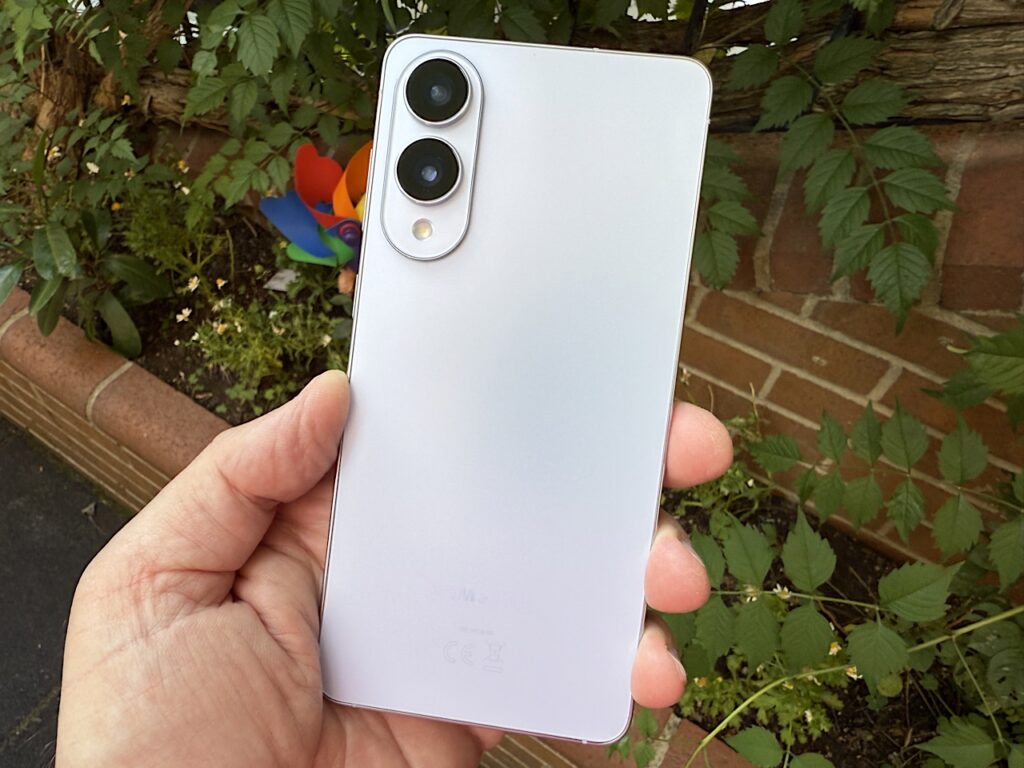
In terms of color options, the Galaxy S25 Edge comes in three different hues, similar to Samsung’s flagships: Titanium Silver, Titanium Night Black, and Titanium Night Blue. These colors are already familiar from the Galaxy S25 Ultra, but thanks to this model’s thin body, these tones create a very different play of light.
The Titanium Silver model, especially when held under light, gains a striking appearance with subtle reflections on its surface. However, the device’s overall design doesn’t feature particularly bold details. The focus is on thinness and lightness, opting for a simple appearance. This may create the perception of the device as a bit too plain for some users.
Ergonomically, the Galaxy S25 Edge is quite comfortable, both for one-handed use and for extended holding. This makes it a more accessible alternative for users who find the Galaxy S25 Ultra’s large and bulky body unsatisfying.
Compared to the S25+, it offers a more compact user experience despite offering a similarly sized screen. The flat bezels may feel angular in the hands of some users, which can sometimes compromise comfort, especially for those with smaller hands. However, overall, the device feels secure to hold, and the risk of dropping it is quite low.
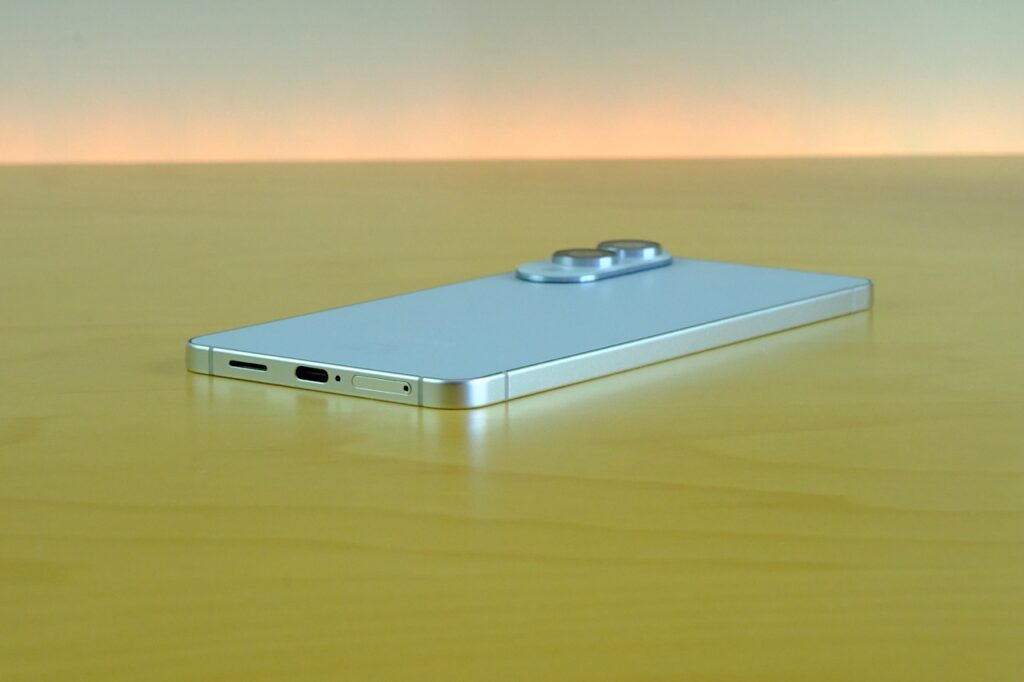
A closer look at the Galaxy S25 Edge’s bottom bezel clearly demonstrates the extent to which its thinness impacts the device’s hardware layout. The space around the USB-C port is quite limited compared to phones of a typically thicker size. Next to this port are the SIM card slot, microphone, and speaker.
The speaker grille is the same size as on the S25 Ultra. The right side houses the volume rockers and power button, and their size and protrusions have been kept minimal to reflect the thinness. It’s worth noting that the ports and ports are positioned neatly and symmetrically along the device’s contours.
The Galaxy S25 Edge offers water and dust resistance thanks to its IP68 certification. This certification means the device is water resistant up to 1.5 meters for 30 minutes. The same standard is also offered on the Galaxy S25+ and S25 Ultra. However, considering the more advanced protection levels, such as IP69, seen on some rival models, Samsung is clearly a step behind in this regard.
However, in practical use, it’s clear that the phone is safe from sudden splashes of water or rainy conditions. It provides sufficient reassurance for users who want to take photos at the beach, in the kitchen, or under the rain.
Screen and Sound
The Samsung Galaxy S25 Edge’s display offers a visual experience that goes beyond its technical specifications. The 6.7-inch LTPO AMOLED 2X panel provides a sharp and detailed image with a resolution of 1440 x 3120 pixels. Samsung hasn’t left out HDR10+ support on this panel, but Dolby Vision support is not included in this model either; this has become the company’s standard preference.
Regarding the refresh rate, the user is offered two different options: the “Standard” mode, limited to 60Hz, and the “Adaptive” mode, which ranges from 1Hz to 120Hz. In Adaptive mode, the display dynamically adjusts the refresh rate according to the content, both improving smoothness and ensuring energy efficiency. The combination of all these shows that the display offers a highly satisfying experience in usage scenarios like watching videos, playing games, or simply browsing the interface.
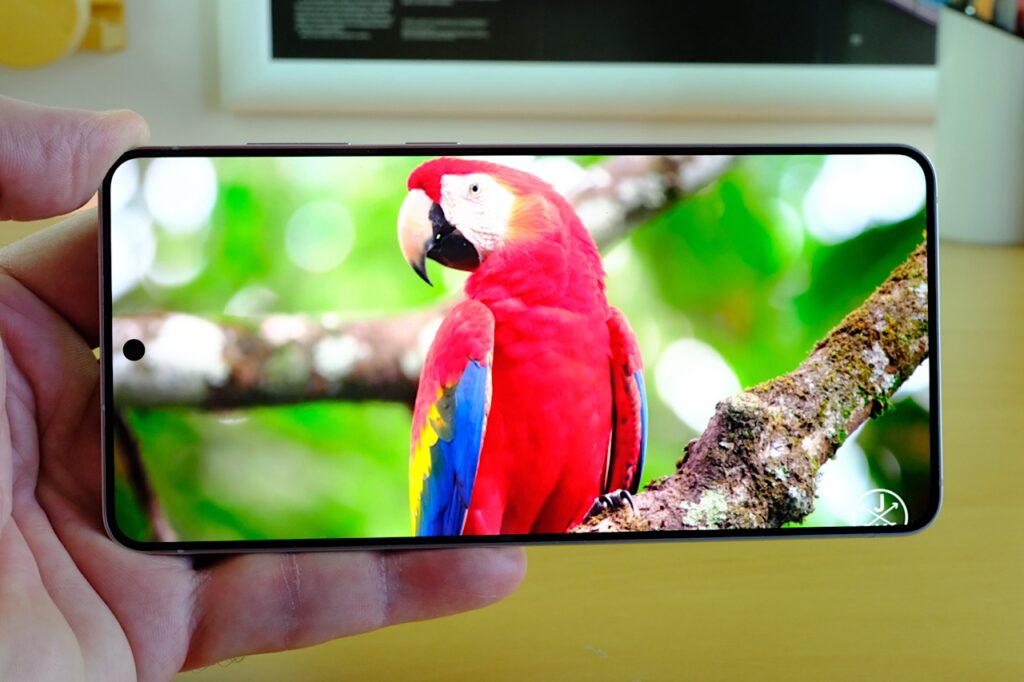
The screen’s brightness distinguishes the S25 Edge from many rivals in its segment. It can reach up to 768 nits in manual mode and 1416 nits in automatic mode. This value makes the screen easily viewable even under direct sunlight. Compared to the Galaxy S25 Ultra, the brightness levels are almost equal.
However, looking at the results of Samsung’s screen brightness tests, it’s clear that the S25 Edge is one of the brightest Galaxy models in this area. This brightness provides a significant advantage, especially in outdoor use, and significantly improves image quality indoors.
Another striking detail about the display is its robust color reproduction. Thanks to its wide color gamut support, it operates with high accuracy in both the sRGB and DCI-P3 color spaces. You can switch between Samsung’s “Vivid” and “Natural” modes, allowing users to experience more saturated colors for a more visually appealing experience or more natural tones for a smoother viewing experience. While color transitions have an 8-bit depth, this limitation isn’t noticeable in everyday use. Compared to true 10-bit displays, some subtle differences in some transitions are noticeable, but these differences are only noticeable by the expert eye.
On the audio front, the Galaxy S25 Edge, despite its thinness, is equipped with dual speakers. The main speaker at the bottom and the second speaker at the top, which functions as an earpiece, deliver stereo sound. The sound output is high, but the richness, especially in the bass frequencies, is somewhat diminished due to the physical limitations of the speakers.
Compared to the Galaxy S25 Ultra, the Edge’s sound output is lower and its tones are flatter. This is because the device’s ultra-thin construction limits the acoustic volume available for the speaker. Nevertheless, the volume is more than sufficient for most users. The audio experience remains satisfactory whether watching TV shows or movies, watching social media videos, or listening to music.
Samsung’s software audio enhancement features are also fully featured on the Galaxy S25 Edge. Dolby Atmos support can be activated on both speakers and headphones. This allows for a wider soundstage, especially when listening to music through headphones. Furthermore, the AI-powered “Audio Eraser” feature, which can be used after video editing, can filter out ambient sounds to highlight dialogue or specific audio elements.
These software improvements go some way towards transcending the limitations of physical speakers. However, it’s worth noting that the speaker system in the Galaxy S25 Ultra offers a wider dynamic range. The S25 Edge partially compensates for the impact of design choices made for portability on the audio system through these software enhancements.
Performance and Battery
The Galaxy S25 Edge’s performance push continues Samsung’s familiar “Elite for Galaxy” strategy. The device features Qualcomm’s specially optimized Snapdragon 8 Elite for Galaxy chipset. This processor, with its dual high-frequency cores clocked at up to 4.47 GHz and the Adreno 830 GPU, delivers a flagship-worthy performance.
This ensures an exceptionally smooth experience, particularly in multitasking and graphics-intensive apps and games. However, due to the device’s ultra-thin body, consistently delivering this power isn’t always easy.
In benchmark tests, the Galaxy S25 Edge delivers similar results to the Galaxy S25 Ultra and S25+; however, in some scenarios, the Edge seems to be slightly behind. Scores in multi-core performance tests, in particular, demonstrate the device’s overall strength.
In GPU-intensive tests like AnTuTu and 3DMark, the device still delivers top-tier performance, albeit with scores a few percentage points lower than the Ultra model. While these differences aren’t noticeable in everyday use, the device’s response to heat under prolonged load can lead to a performance hit in some scenarios. Despite this, the S25 Edge doesn’t lag behind any flagship phones, and in fact, it’s on par with them most of the time.
The device’s most notable technical limitation is undoubtedly its battery capacity. The Galaxy S25 Edge comes with a 3900mAh battery, one of the lowest not only in the S25 family but also in the flagship segment overall. Here, Samsung appears to have made a compromise for the sake of thinness. While the Galaxy S25+ and Ultra models feature larger batteries of 4900mAh and 5000mAh, respectively, the capacity offered by the S25 Edge is limited both numerically and practically. This difference is clearly noticeable in daily use.
Under moderate usage, including social media, web browsing, a few hours of video streaming, and a little camera use, the Galaxy S25 Edge can last a full day. However, screen-on time typically hovers around 2 to 2.5 hours.
With more intense usage, such as gaming, long video recordings, or using the screen at high brightness, the device struggles to last a full day. In these cases, it requires charging at least once a day. In such a usage scenario, a portable charger becomes an almost essential accessory.
On the charging side, this model doesn’t offer the 45W support offered by Samsung’s flagship models; the Galaxy S25 Edge is limited to 25W fast charging. If you have an adapter with Samsung’s PPS protocol, you can reach 56% charge in 30 minutes. A full charge takes approximately 75 to 80 minutes, which is significantly longer than 45W-capable devices like the Galaxy S25+. Furthermore, the lack of a charging adapter in the box also forces users to pay extra.
On the wireless charging side, the device can charge at a speed of 15W. This is slightly below average compared to market competitors. However, its compatibility with the Qi2 standard promises a more stable charging experience with future accessories.
Despite all this, it’s clear that fast charging support isn’t enough to compensate for the lack of battery capacity. The charge limiting options for battery health are a positive feature for long-term use. The ability to set a charge limit between 80 and 95 percent helps preserve battery life.
While the Galaxy S25 Edge’s thin design might lead to inadequate thermal management, Samsung has developed special solutions to address this. The device’s vapor chamber is spread over a larger surface area but is kept thin. This allows for a more controlled temperature, especially during short-term loads. However, in scenarios requiring high performance for extended periods, such as graphics-intensive games or 4K video recording, processor performance may drop. In such demanding scenarios, the Galaxy S25 Edge lags behind the S25 Ultra in terms of performance sustainability.
Software and Security
On the software front, the Galaxy S25 Edge fully offers users the latest solutions Samsung has introduced to its flagship devices. Running the Android 15-based One UI 7 interface, the device provides a highly refined experience in terms of both interface design and system infrastructure. The user interface has gained a more modern and fluid structure, particularly with simplified menus, more readable fonts, and dynamic icons.
While Samsung remains true to its long-standing user habits, it doesn’t neglect to adapt them to modern requirements. Many details, from the Settings menu to multi-window operation, are intuitively organized. It’s also worth noting that it operates with an optimization approach that doesn’t slow down the system’s overall performance. In this respect, the Galaxy S25 Edge offers a depth of software experience to match its hardware sophistication.
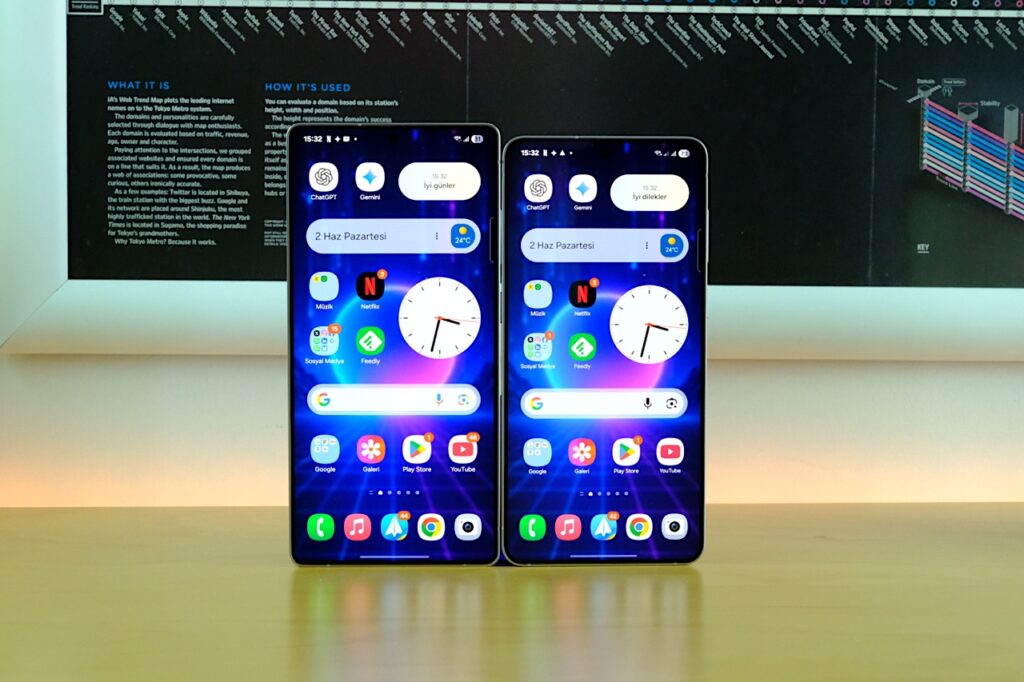
Galaxy AI, one of Samsung’s most concrete steps in artificial intelligence as of 2025, also plays a leading role in the Galaxy S25 Edge’s software. The device can construct meaning not only through text or voice commands, but also through visual input. It’s now possible to obtain information directly by pointing the camera at an object or to perform actions based on visual data from the environment.
This visual analysis capability has been deepened with Google’s Gemini AI technology. Voice commands are also more contextual than before, allowing the device to better understand what you mean, not just what you say. This visual and multi-modal support feature of Galaxy AI, first introduced in the Edge model, will soon be integrated into other S25 models.
Another area that further enriches the user experience is its generative AI-powered editing tools. When editing photos and videos, the AI-powered “Generative Editing” feature allows you to easily delete unwanted objects. With the “Drawing Assistant” function, a simple doodle or text input can be transformed into a realistic image. Removing background noise from videos with “Noise Eraser” or adding artistic touches to selfies with “Portrait Studio” are now possible with just a few taps.
All of these tools are available directly within the Gallery app, eliminating the need for a third-party app. Furthermore, the ability of these AI features to work offline provides a significant advantage in terms of privacy and speed. Samsung has not only provided impressive tools in this area, but also easy and accessible ways to use them.
Samsung’s long-term software policy is another notable aspect of the Galaxy S25 Edge. The device is supported for seven years of major Android updates and security patches. This means users will have a device that will stay up-to-date not just for a year or two, but for much longer. Samsung hasn’t just kept these promises on paper;
it’s delivered almost exactly on the update promises it made on its models released over the past two years. Furthermore, the software infrastructure used in the Edge is also open to new Galaxy AI features that will be released in the future, ensuring the device remains up-to-date not only today but also tomorrow. This software support is a major plus for users who prefer to keep their devices for the long term.
On the security front, the Galaxy S25 Edge combines Samsung’s expertise in mobile devices with software and hardware solutions. The ultrasonic fingerprint reader is located under the display and operates quite quickly in daily use. This system, which is stable even with a wet finger or in low light, offers a satisfactory level of security.
The device also features facial recognition, but because it only works via the front camera, it’s secondary to biometric authentication. Samsung’s Knox security infrastructure protects both the device’s software and hardware. Additional security layers, such as app permission management, privacy controls, and encrypted folders, are comprehensively designed to protect user data from external threats. Thus, the Galaxy S25 Edge strikes a balance between security and sophistication.
Camera
While the Galaxy S25 Edge isn’t one of the strongest players in its class in terms of camera hardware, it does offer a striking design thanks to some clever choices. There are only two cameras on the rear: one with a 200-megapixel main sensor and the other a 12-megapixel ultra-wide-angle lens.
The main camera is equipped with the same Samsung ISOCELL HP2 sensor found in the Galaxy S25 Ultra, meaning it’s identical to the Ultra model in terms of its technical infrastructure. However, the Edge model lacks a telephoto camera to accompany this main sensor, meaning it’s forced to rely on digital solutions for zooming. However, the resolution offered by the 200MP sensor ensures that there’s no noticeable loss of quality when digitally cropping images up to 2x.
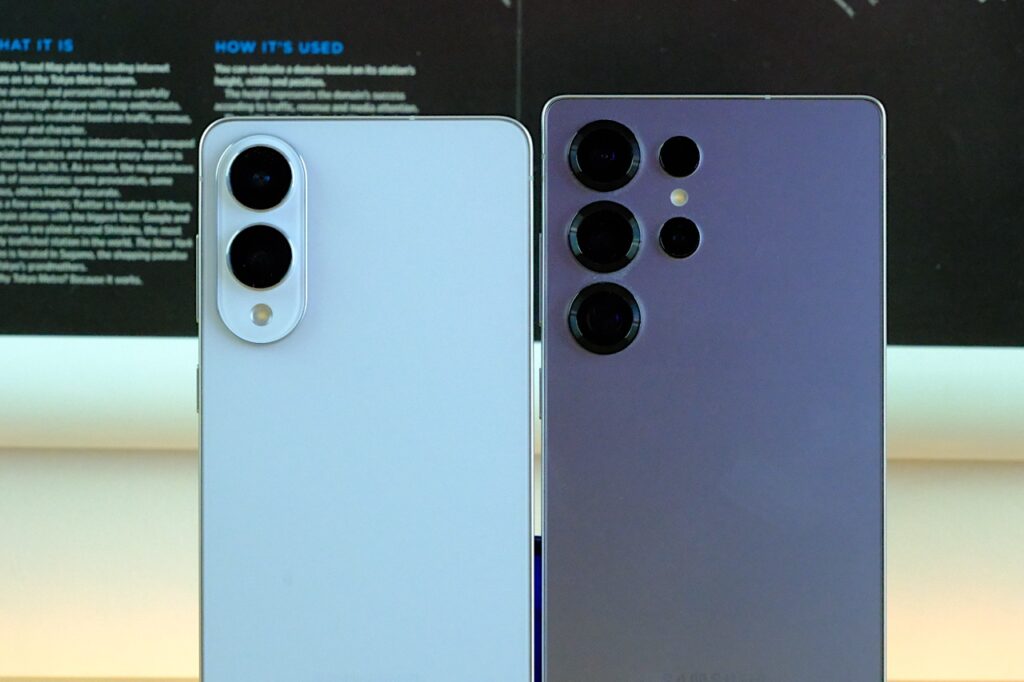
Color accuracy is high in shots taken with the main camera, and dynamic range is quite wide. Photos taken in daylight offer largely similar visual quality compared to the Galaxy S25 Ultra. Color saturation is maintained close to realistic without being overdone.
While the 200MP mode is technically impressive in terms of detail capture, it’s worth noting that unprocessed images aren’t always satisfactory in terms of sharpness and noise. In practical use, 12MP photos created with pixel binning yield much more balanced results. In Portrait mode, edge separation is good, the soft blur of the background looks natural, and skin tones are generally accurately rendered.
For the ultra-wide camera, Samsung has opted for the sensor from the Galaxy S25+. However, this sensor now comes with autofocus support, providing flexibility in both wide-angle and macro shooting. While the photos are generally satisfactory, there’s occasionally some softening and loss of detail in the edges.
The dynamic range is somewhat limited compared to the main camera, causing loss of detail in shadows and bursts of light at high brightness levels. However, autofocus allows for very sharp and detailed macro shots. The camera app features an automatic macro mode switch, but this switch can sometimes trigger erratically.
The 12MP selfie camera on the front features the same hardware structure across the entire Galaxy S25 series. Thanks to autofocus support, there’s no loss of clarity when taking selfies from different angles and distances. The wide dynamic range and natural skin tones deliver satisfying results, especially in well-lit environments. Indoor shots may experience slight softening and increased noise, but this is acceptable for the segment. Background separation can be occasionally unstable in portrait mode, and edges can lose sharpness, especially in complex backgrounds. Nevertheless, overall, the front camera performance is more than adequate for social media use.
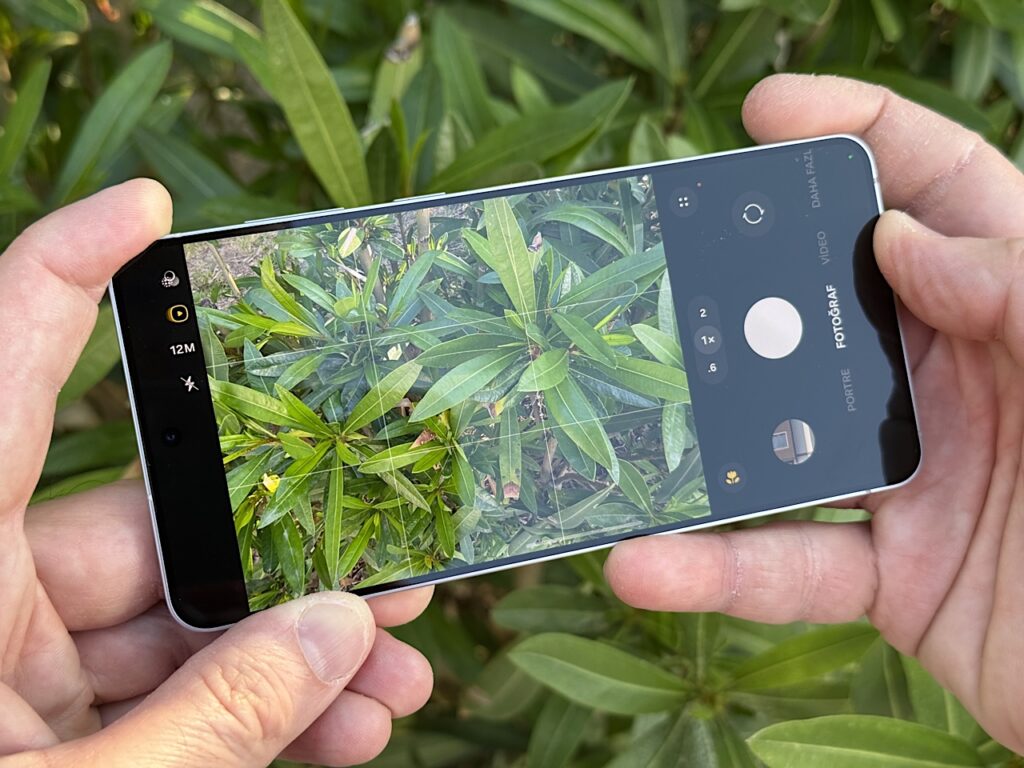
The Galaxy S25 Edge’s low-light and nighttime performance stands out as a critical area where the limitations of the camera hardware meet the strengths of the software. The main camera largely maintains color accuracy even in shots taken without switching to Night Mode; however, the level of detail can drop significantly, and images exhibit softening and increased digital noise. Activating Night Mode significantly improves both sharpness and contrast, revealing shadow details and preventing bright light sources from blowing out. The ultra-wide-angle camera’s nighttime performance is more limited, with edge blurring and a decrease in dynamic range observed in low light.
However, thanks to the autofocus, close-up nighttime shots deliver reasonable results. In nighttime selfies taken with the front camera, softening details is inevitable without artificial light support; despite this, skin tones remain natural, and background lighting is kept under control with HDR algorithms. While the Galaxy S25 Edge generally delivers satisfactory low-light performance, the main camera’s Night Mode software, in particular, stands out as one of the device’s most powerful weapons against the competition in this segment.
On the video front, the Galaxy S25 Edge delivers powerful performance to the best of its hardware. The main camera allows for 8K 30 fps recording, while slow-motion options go up to 120 fps in 4K and 240 fps in Full HD. The newly added “Galaxy Log” video mode is a significant improvement for professional users; videos recorded in this mode offer greater flexibility in color correction. Furthermore, HDR video recording is now processed in 10-bit, allowing images to be presented with deeper, more natural contrast. The ultra-wide-angle camera and the front camera can record video at up to 4K 60 fps. Image stabilization performance is also quite stable, keeping shake to a minimum, especially when walking or shooting handheld.
Samsung’s contributions to Galaxy AI are also reflected in the camera software. The “Auto Category” feature, accessible within the Camera app, simplifies editing by grouping captured photos by content. Furthermore, the AI-powered scene recognition engine detects objects in the frame and automatically applies the most appropriate shooting settings. The new “Moment Suggestion” feature allows you to compare content-based images by presenting past frames similar to the scene as soon as the photo is taken. Furthermore, the AI-powered audio cleaning feature in video editing filters out unwanted sounds like wind, crowd noise, or background music, ensuring a clear audio experience. All these features transform the camera experience from a simple “shoot” command to a much more comprehensive production process.
Overall, the Galaxy S25 Edge offers a powerful package thanks to its limited number of lenses, thanks to its software support. While it lacks the advanced zoom systems of the Galaxy S25 Ultra, a limited level of zoom is still possible thanks to the high resolution of the main camera. Features like 8K video recording support, 10-bit HDR, and a log profile make this device suitable not only for social media content but also for semi-professional projects. Small but impactful innovations like autofocus support on the ultra-wide camera increase the device’s photographic flexibility. The simple yet functional structure of the camera app makes it easy to achieve the desired result without overwhelming the user with technical details. In short, the Galaxy S25 Edge offers a camera experience that manages to compensate for its hardware shortcomings with software prowess.
Conclusio
The Galaxy S25 Edge takes a different path in Samsung’s flagship series by adopting a design-centric approach. With its ultra-thin body, lightweight build, and compact feel, it targets users who want to avoid the bulkiness of standard flagships. Its durable construction, particularly supported by a titanium frame and Gorilla Glass Ceramic 2, offers a premium experience in terms of design and material quality.
However, this thinness comes at the cost of sacrifices in battery capacity and some camera components. The lack of a telephoto camera, lower battery life, and a limited 25W charging speed are among the drawbacks that directly affect the device’s overall usability and flexibility. However, if user expectations are primarily portability, aesthetics, and basic, strong performance, the Galaxy S25 Edge succeeds in meeting these criteria. However, for users who expect the best of everything from a device, it might be more prudent to consider other options.
Compared to the Galaxy S25 Ultra, the Edge clearly falls behind in terms of camera and battery life. Features like the S25 Ultra’s versatile camera system, larger battery, S Pen support, and higher charging power offer clear advantages for those looking for a more comprehensive user experience. On the other hand, compared to the Galaxy S25+, the Edge is more ambitious in some areas:
for example, it offers a 200MP main camera, sharper screen resolution, and a slimmer profile in terms of aesthetics. However, the S25+ stands out as a more durable option for everyday use than the Edge, with its longer battery life and faster charging times. The Edge’s pricing positioning between the S25+ and Ultra can be confusing. Performance-wise, it’s not exactly in between the two models; it’s more of a design alternative, which narrows down the reason for choosing the Edge.
If we were to define who this model is aimed at, it’s perfect for users who prioritize portability and slimness above all else. Users who want their phone to feel as small as possible in their bag or pants pocket, while still seeking a powerful basic camera experience and top-tier performance, will find what they’re looking for in the Galaxy S25 Edge.
This device offers a reasonable balance for those who create social media content, take photos and videos regularly, but don’t need professional-level zoom or specialized camera equipment. Office users, corporate professionals, or consumers who prioritize aesthetic design might also consider the Edge.
However, for users who prioritize battery life, play games intensively throughout the day, or travel frequently, this device may present some practical challenges. For users who don’t properly define their usage scenario, the Edge model may seem impressive at first, but it can become restrictive over time. Therefore, it’s crucial to clarify your usage priorities before making a purchase decision.
Overall, the Galaxy S25 Edge is a highly successful model in certain respects. Seven years of software update support, advanced Galaxy AI features, and the use of premium materials elevate the device from being just another “designer phone” to a long-term option. The camera hardware’s limitations are partially offset by software improvements, and the display quality easily reaches flagship standards.
Despite all these advantages, the price tag and the technical features offered can sometimes be compromised. This makes the Galaxy S25 Edge a specialized option for a specific user profile rather than a model that appeals to the masses. For users willing to sacrifice some features for slimness and style, the Edge model may be satisfactory. However, for those seeking a more balanced, long-lasting device, alternatives like the Galaxy S25+ or S25 Ultra remain stronger and more logical options.

